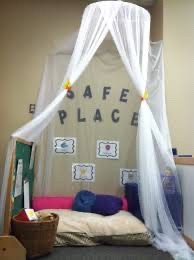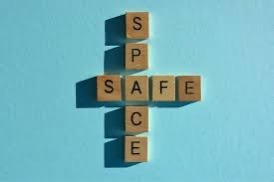Student Contributor: N.Nunez
 Safe spaces in a classroom consist of allowing students to go and relieve stress, calm down and recharge their emotions before going back to learn. A safe space supports students social-emotional learning by teaching these students to focus on their good emotions and manage their bad emotions.
Safe spaces in a classroom consist of allowing students to go and relieve stress, calm down and recharge their emotions before going back to learn. A safe space supports students social-emotional learning by teaching these students to focus on their good emotions and manage their bad emotions.
Safe spaces are for all children in the classroom. Although these spaces are most effective and used by students with high levels of trauma, stress or anxiety, all students are welcome to use the safe space to manage their emotions and behavior. Safe spaces teach students a variety of different qualities. For example, it teaches students respect, healing, and empathy. A safe space allows students to correct their behavior before behaving inappropriately or reflect on their previous behavior. Having a zone where students can feel safe, unjudged and comfort to cope with their feelings help these students heal and return to classroom activities with full attention and positive behavior. These safe spaces can include a variety of different things, soft relaxing music, fidgets, gadgets, comfortable seating and more.
 The phases of management that this tool falls into is both the supportive phase and the corrective phase. Providing students with a healing and safe space after negative or inappropriate behavior is allowing them to correct their behavior and mentality before returning to work. Safe spaces also fall into the supportive phase category because in the supportive phase because the tool can happen during the learning. Some students will need to immediately need to go to the safe space this will help support students emotional healing and help them return to their classwork. This tool is student directed. Students are responsible for their behavior and managing their behavior in their safe space.
The phases of management that this tool falls into is both the supportive phase and the corrective phase. Providing students with a healing and safe space after negative or inappropriate behavior is allowing them to correct their behavior and mentality before returning to work. Safe spaces also fall into the supportive phase category because in the supportive phase because the tool can happen during the learning. Some students will need to immediately need to go to the safe space this will help support students emotional healing and help them return to their classwork. This tool is student directed. Students are responsible for their behavior and managing their behavior in their safe space.
More Information –
Tool Source: We Are Teachers

